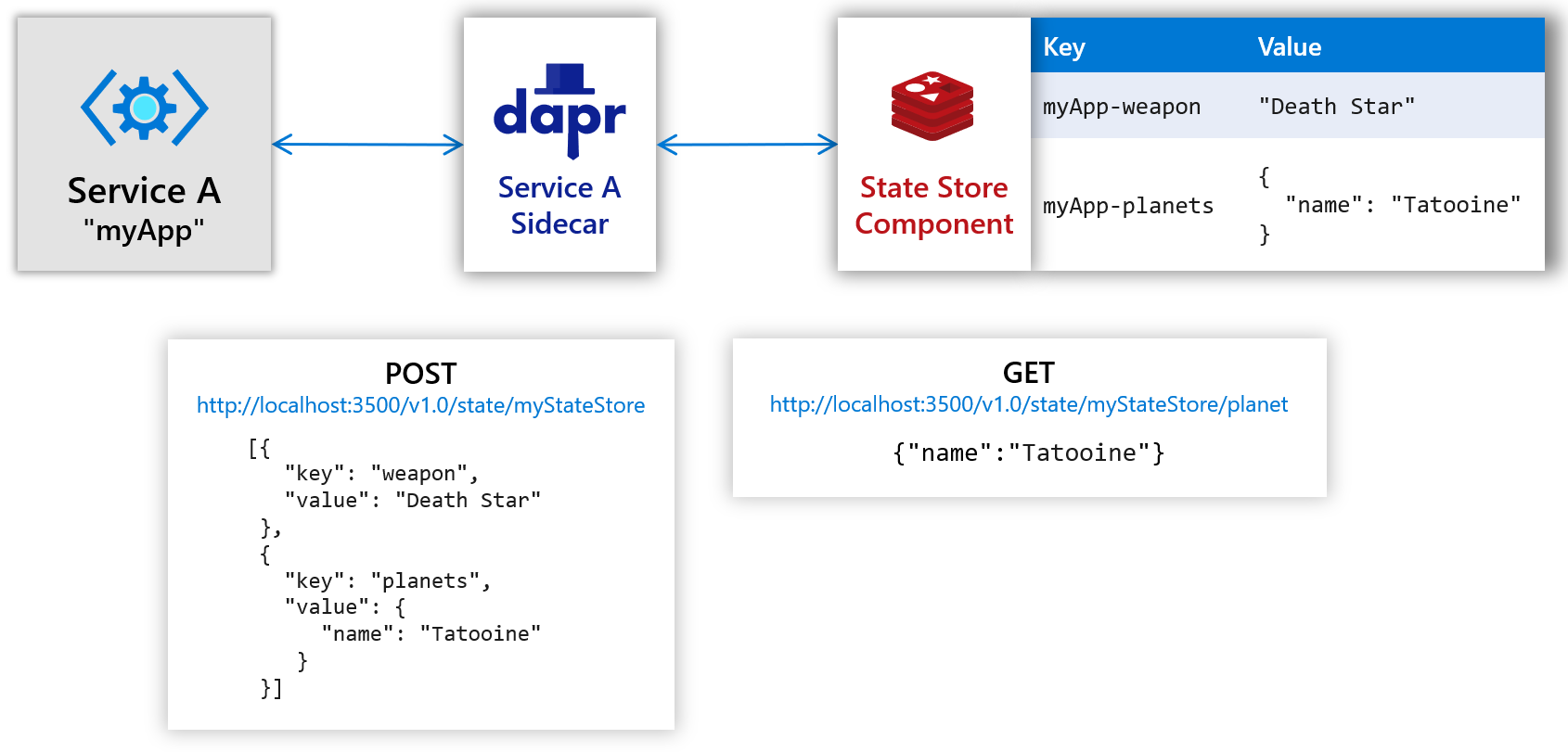
Challenge 4 - Dapr Redis State Management
< Previous Challenge - Home - Next Challenge >
Introduction
In this challenge, you’re going to add Dapr state management in the TrafficControlService to store vehicle information.
Description
Dapr includes APIs that support stateful, long-running services with key/value storage. Services can use these APIs to leverage a variety of popular state stores, without adding or learning a third party SDK.
Furthermore, the Dapr state management building block provides several other features that would otherwise be complicated and error-prone to build yourself:
- Distributed concurrency and data consistency
- Retry policies
- Bulk CRUD operations
The following diagram shows the high level architecture:

Right now, this is all you need to know about this building block. If you want to get more detailed information, read introduction to the state management building block.
You will need to modify the services to use the Dapr state management block.
- Create a Dapr configuration file for specifying the state management Dapr component.
- Modify the
TrafficControlService(TrafficControllerclass) so it saves the state of a vehicle (VehicleStateclass) using the Dapr state management building block after vehicle entry. Use the HTTP API to call your Dapr sidecar. - Modify the
TrafficControlService(TrafficControllerclass) so it reads and updates the state of a vehicle using the Dapr state management building block after vehicle exit. - Restart all services & run the
Simulationapplication. - Once you have the above working, modify the solution so that it uses Azure Cache for Redis as a state store instead of the default local Redis cache.
Success Criteria
This challenge targets the operation labeled as number 3 in the end-state setup:

- Validate that the
TrafficControlServicehas been modified to use the Dapr state management building block when saving vehicle state on vehicle entry. - Validate that the
TrafficControlServicehas been modified to use the Dapr state management building block when reading & updating vehicle state on vehicle exit. - Validate the state data is stored in the local Redis cache.
- Validate that state data is stored in Azure Redis cache.
Tips
- Redis listens on port 6379 by default.
- Use the redis CLI inside the
dapr_rediscontainer that is used as the state-store in the default Dapr installation.- Run the redis CLI locally:
docker exec -it dapr_redis redis-cli - Use Redis CLI commands like
keysandhgetallto validate data inside the Redis cache store.
- Run the redis CLI locally:
- Use Azure CLI commands for Redis to get the host, port & Redis password (primaryKey).
az redis list-keys --name <redis-cache-name> -g <resource-group-name> - Use the Azure portal & select the
Redis Cacheresource and click onConsoleto run similar commands as you did in the local Redis cache instance.